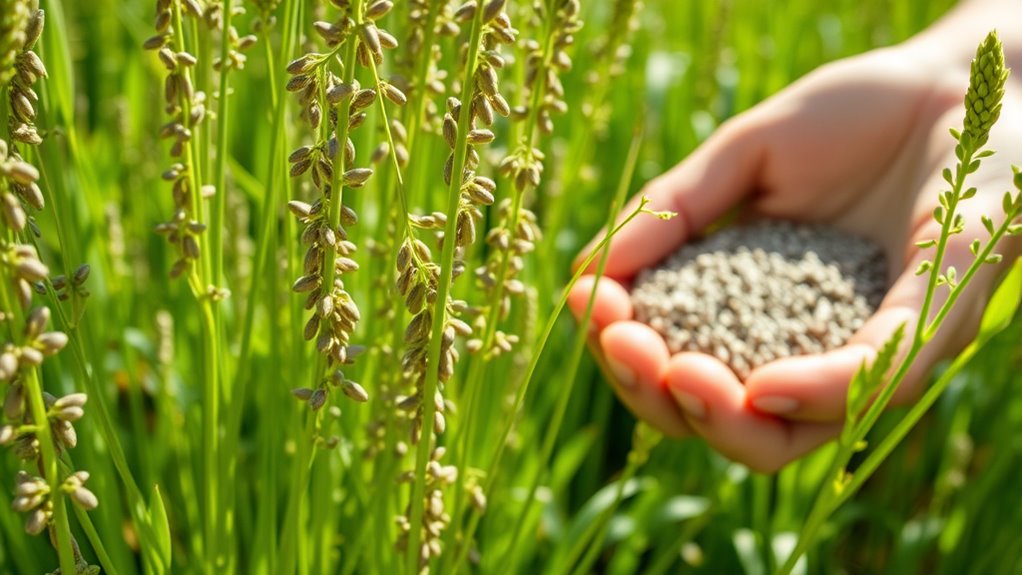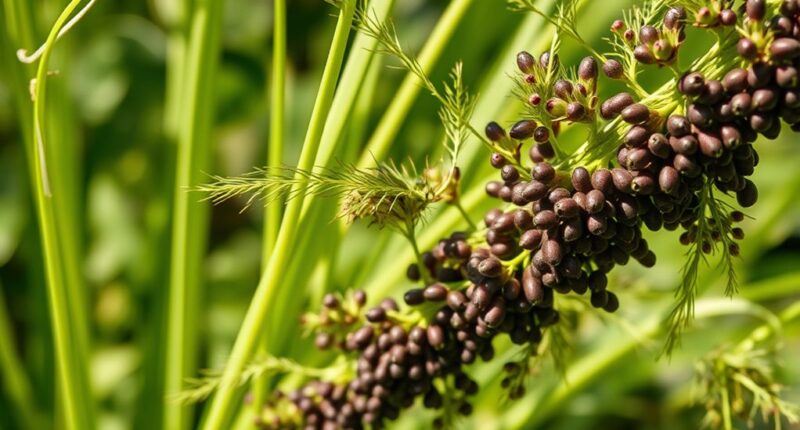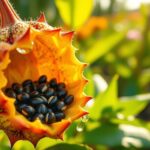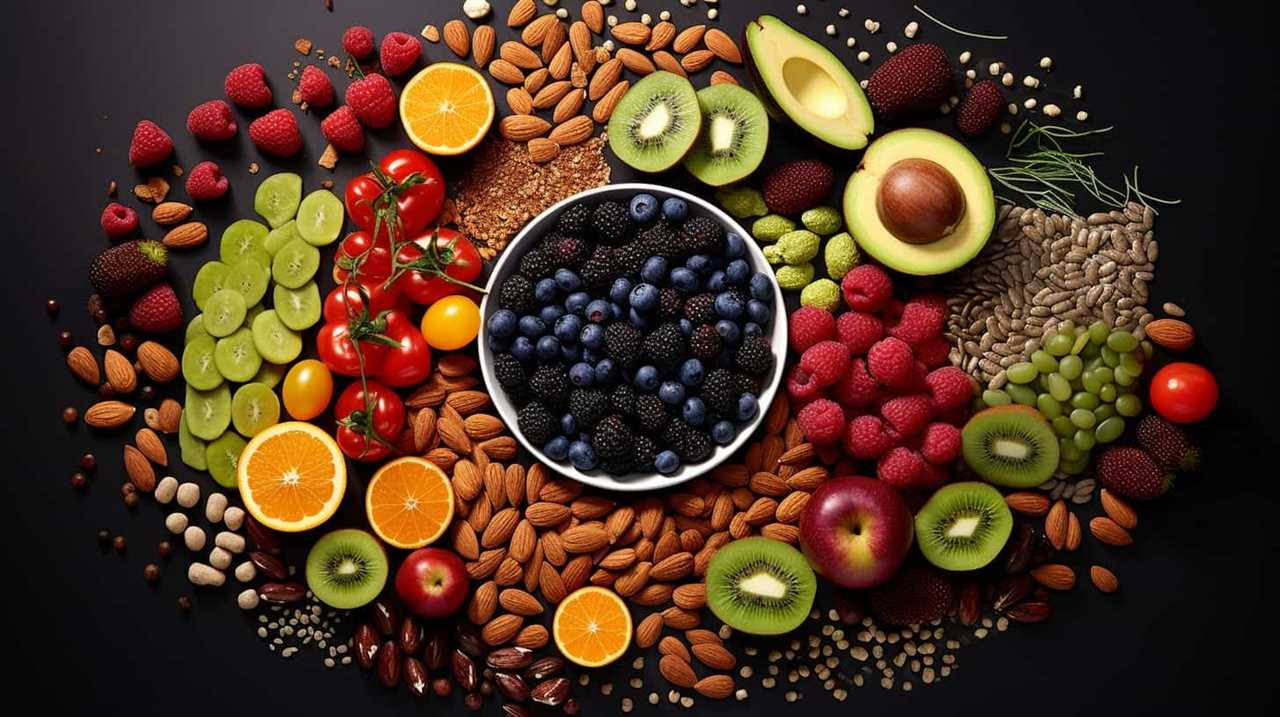You can typically expect to harvest about 1 to 2 ounces of chia seeds per plant when grown under ideal conditions. To maximize your yield, make certain you select the right planting time, use well-draining, fertile soil, and manage watering and pests carefully. Proper soil preparation, spacing, and crop management also play key roles in boosting seed production. Keep these tips in mind, and you’ll discover even more ways to improve your chia harvest.
Key Takeaways
- On average, a healthy chia plant yields about 1 to 2 ounces of seeds per harvest.
- Optimal growing conditions can increase seed production up to 3 ounces per plant.
- Proper soil preparation and watering are essential to maximize seed yield.
- Mature chia plants typically produce seeds about 3 to 4 months after planting.
- Consistent crop management, including pest control, boosts overall seed harvest per plant.

Chia seed yield depends on various factors, including planting practices, soil quality, climate conditions, and crop management. When it comes to planting techniques, how you sow your chia seeds makes a significant difference in your harvest. You should start by choosing the right time to plant, ideally when the soil has warmed up and the risk of frost has passed. Sow the seeds shallowly, about 1/4 inch deep, and space them properly—roughly 1 to 2 inches apart—so the plants can develop fully without competition. Using a fine seed drill or even broadcasting the seeds evenly across the prepared bed works well, but make sure to lightly cover them with soil or mulch to protect from birds and to help retain moisture. Consistent watering during germination and early growth stages is vital, as chia seeds need adequate moisture to sprout efficiently.
Understanding the soil requirements for chia is indispensable for maximizing yield. Chia plants thrive in well-draining soils with good fertility. You should aim for a loamy or sandy soil with a pH between 6.0 and 8.0. Before planting, it’s wise to test your soil to verify it meets these conditions. If your soil is heavy clay or too acidic, amend it with organic matter such as compost or aged manure to improve drainage and nutrient content. Proper soil preparation helps prevent issues like root rot and ensures the plants have a healthy foundation to grow strong. Keep in mind that overly rich soils may lead to excessive foliage growth at the expense of seed production, so balance is key.
Crop management also plays a role in determining how much you can harvest per plant. Maintaining consistent moisture levels without overwatering encourages healthy flowering and seed development. Mulching around the plants helps conserve moisture, suppress weeds, and keep the soil temperature stable. As the plants grow, monitor for pests and diseases, and take timely action if needed. Fertilizing with a balanced, low-nitrogen fertilizer during the early growth stages can boost seed production. As the plants mature, reducing fertilization prevents excessive foliage, which can hinder seed development.
Frequently Asked Questions
How Long Does It Take for a Chia Plant to Mature?
When considering plant maturity and harvest timing, you’ll find that chia plants typically take about 8 to 12 weeks to mature from planting. You’ll want to watch for flowering, which signals readiness for harvest. The timing varies based on growing conditions and variety. To guarantee a good harvest, monitor your plants closely for signs of maturity, and plan to harvest when the seed heads turn brown and dry.
What Environmental Conditions Maximize Chia Seed Production?
To maximize chia seed production, you should guarantee ideal environmental conditions. Focus on maintaining high soil fertility with organic matter and proper pH levels. Keep pests under control through effective pest management, preventing damage that can reduce yields. Ensure plants get full sun and consistent watering, especially during flowering. Good air circulation also helps prevent disease. These conditions create an ideal environment for healthy chia plants and higher seed yields.
Can Chia Plants Be Grown Indoors for Seed Harvesting?
Certainly, you can cultivate chia indoors, creating a controlled climate for consistent seed collection. With proper indoor cultivation, you control light, temperature, and moisture, optimizing seed harvesting techniques. You’ll want to provide ample sunlight or grow lights, ensure well-draining soil, and maintain steady humidity. By managing these factors, you’ll maximize your chia seed harvest, making indoor planting an efficient, enjoyable endeavor that yields satisfying seed supplies all year round.
How Often Should Chia Plants Be Watered for Optimal Yield?
You should water your chia plants regularly, aiming for consistent soil moisture without overwatering. Typically, watering frequency depends on your climate, but generally, watering once or twice a week works well. Keep in mind, chia plants have drought tolerance, so they can handle some dry periods. However, for ideal seed production, maintain steady moisture, especially during flowering and seed formation stages. Adjust watering based on weather and soil condition.
Are There Different Chia Varieties With Varying Seed Yields?
Think of chia varieties as different breeds of dogs, each with unique traits. Yes, there are various chia varieties, and they have seed yield differences. Some produce more seeds per plant, while others focus on quality or size. Your choice of variety influences your harvest, so researching specific types can help you select the best one for your goals. Understanding these differences guarantees you maximize your chia seed yield effectively.
Conclusion
Imagine your chia plants as tiny green warriors, each fighting to produce a bounty of precious seeds. With patience and care, you’ll witness a harvest that feels like reaping a treasure chest from the earth itself. Every seed you gather is a small victory, a proof to your nurturing touch. So keep tending, stay hopeful, and watch your chia garden bloom into a vibrant tapestry of life and abundance.















